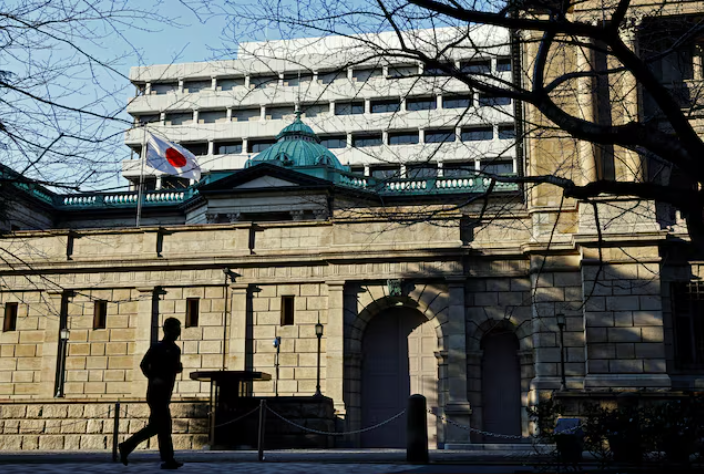BOJ may raise rates over labor shortages

By MG News | February 07, 2025 at 10:26 AM GMT+05:00
February 07, 2025 (MLN): The Bank of Japan is increasingly blaming chronic labor shortages, not stagnant demand, as the main reason for its weak economic activity, a justification it may use to lift interest rates beyond what was initially expected.
From factories to hotels to restaurants, Japanese businesses are struggling to reach full capacity not because they can't find customers, but because they can't find workers.
This commentary is now increasingly emerging from the central bank, as Reuters reported.
While the tight labor market is not a new trend, the BOJ's growing concerns about the resulting wage and inflationary pressures indicate it will be more inclined to overlook economic weakness.
Analysts and policymakers say this could lead the bank to consider raising interest rates further.
"My view is that ... the output gap is already in positive territory in reality and the lack of supply capacity is exerting upward pressure on prices," Naoki Tamura, a hawkish BOJ board member, said on Thursday.
On paper, Japan's output gap, which measures whether the economy is running at its full potential, remains slightly negative, suggesting demand lacks momentum to ignite inflation.
Coupled with soft consumption, it has been seen by analysts as a factor that could discourage the central bank from raising borrowing costs too much.
But BOJ policymakers are challenging that narrative.
A close look at the BOJ's quarterly outlook report published in January reveals the bank is paying more attention to growing signs of wage-driven inflation.
This is due to chronic labor shortages, which are building the case for sustained, steady rate hikes.
In that report, the BOJ said a dwindling pool of female and elderly workers meant labor market conditions are tightening even amid subdued economic growth.
"In this situation, upward pressure on wages and prices is likely to be stronger than suggested by the output gap, given that firms in many industries have started to face labor supply constraints," the report said.
The report also analyzed how labor-intensive sectors such as construction and services were facing serious worker shortages that were curtailing activity.
The BOJ's increasing focus on wage-driven inflation is another sign Japan is shedding its 25-year battle with deflation and economic stagnation.
It also contrasts with former Governor Haruhiko Kuroda's insistence on using radical stimulus to fire up inflation.
"The BOJ is becoming more convinced that wages and services prices will keep rising," said former BOJ top economist Seisaku Kameda, who is now an executive economist at Sompo Institute Plus.
"Its report, the language of its policy statement, and the governor's comments all back up the case for more rate hikes."
Mindful of the risk of an inflation overshoot, BOJ board members debated the chance of further interest rate hikes even after raising short-term rates to 0.5%, a summary of opinions at the January meeting showed.
One opinion cited labor shortages as keeping inflation elevated, while another warned of the risk of "stagflation," where high inflation and low growth co-exist, the summary showed.
The BOJ's hawkish tilt means markets may put greater focus on the bank's language around wage-driven inflation, rather than its views on consumption.
"The BOJ is becoming increasingly mindful of how labor market conditions could be putting upward pressure on wages and prices, more than what its output gap estimate suggests," said Ryutaro Kono, chief Japan economist at BNP Paribas.
"While the initial factor may have been the weak yen, the BOJ is beginning to recognize the risk of price rises turning into home-made inflation," he added.
Japan's rapidly aging population has led to a dwindling pool of workers.
The country faces a deficit of 3.4 million workers by the end of this decade and 11mn by 2040, according to a 2023 study by Recruit Works Institute.
Kushikatsu Tanaka Holdings, which runs a restaurant chain nationwide, is among retailers suffering from chronic labor shortages, particularly in regional areas.
"It's not as if we're suddenly facing a shortage of staff it's a permanent issue," an executive of the company told Reuters.
"In regional areas, it's not even about hourly pay.
There's a lack of people in the first place. We're trying to consolidate our outlets and shut those that are proving unprofitable."
Keen to retain workers, Japanese companies agreed to an average 5.1% wage hike in 2024, the biggest increase in three decades, a union survey showed.
In his speech on Thursday, BOJ board member Tamura said labor shortages were forcing hotels to reduce occupancy rates and meant some taxi operators had more cars than drivers.
As central banks have no power to address supply constraints, their mandate remains squarely on combating subsequent inflationary pressure by raising interest rates.
With stubbornly high raw material costs and labor shortages keeping inflation above the BOJ's target for nearly three years, markets are now reassessing their view rates won't rise too much.
Governor Kazuo Ueda said last month the BOJ's policy rate was still distant from levels deemed neutral to the economy, leaving scope for several more rate increases.
BOJ staff estimates Japan's nominal neutral rate to be in the range of 1.0% to 2.5%.
Having seen Japan's prolonged struggle with deflation, many analysts had bet the highest the BOJ could hike would be up to 1%.
However, building inflationary pressures may reduce the chance the BOJ will pause there.
Growing market expectations that the BOJ's terminal rate could be higher have helped lift Japanese government bond yields to multi-year highs and propped up the yen.
"There's no reason why markets should assume that rates won't rise beyond 1.0%, which is the bottom of the estimated range," said a source familiar with the bank's thinking.
Copyright Mettis Link News
Related News
| Name | Price/Vol | %Chg/NChg |
|---|---|---|
| KSE100 | 122,761.64 221.02M |
0.42% 515.00 |
| ALLSHR | 76,639.56 737.19M |
0.55% 415.67 |
| KSE30 | 37,384.76 82.98M |
0.27% 100.90 |
| KMI30 | 182,010.54 133.56M |
0.09% 156.82 |
| KMIALLSHR | 52,673.75 392.33M |
0.41% 217.37 |
| BKTi | 31,224.18 21.69M |
0.75% 231.73 |
| OGTi | 27,512.98 12.61M |
-0.29% -80.05 |
| Symbol | Bid/Ask | High/Low |
|---|
| Name | Last | High/Low | Chg/%Chg |
|---|---|---|---|
| BITCOIN FUTURES | 106,945.00 | 107,145.00 105,955.00 |
1200.00 1.13% |
| BRENT CRUDE | 67.77 | 68.47 67.72 |
0.63 0.94% |
| RICHARDS BAY COAL MONTHLY | 88.00 | 0.00 0.00 |
-2.60 -2.87% |
| ROTTERDAM COAL MONTHLY | 103.45 | 0.00 0.00 |
-0.05 -0.05% |
| USD RBD PALM OLEIN | 998.50 | 998.50 998.50 |
0.00 0.00% |
| CRUDE OIL - WTI | 64.98 | 65.65 64.89 |
0.61 0.95% |
| SUGAR #11 WORLD | 16.34 | 16.46 16.31 |
-0.02 -0.12% |
Chart of the Day
Latest News
Top 5 things to watch in this week
Pakistan Stock Movers
| Name | Last | Chg/%Chg |
|---|
| Name | Last | Chg/%Chg |
|---|



